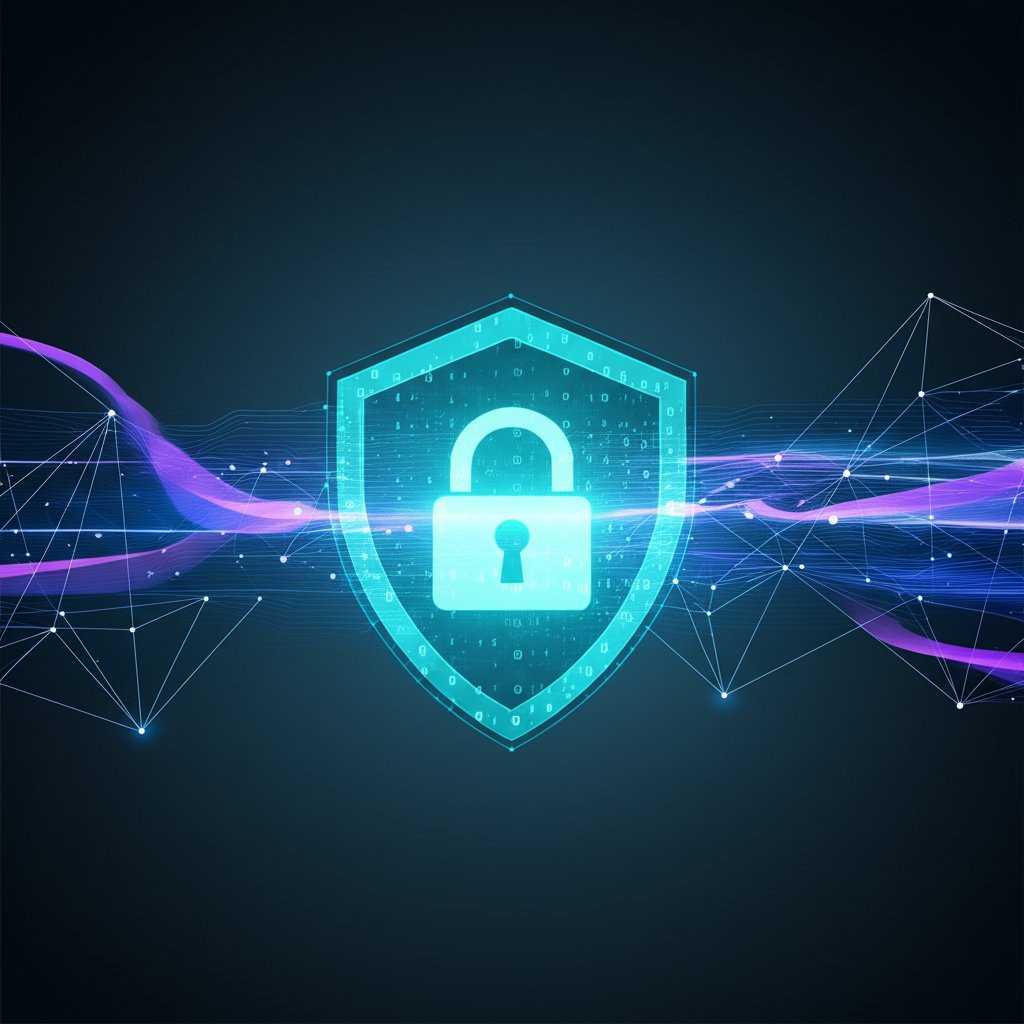Quantum-Proof Your Digital Identity: A Simple Guide to Post-Quantum Cryptography Adoption
Here’s a stark truth: the digital world as we know it is headed for a fundamental shift. We’re talking about a future where today’s strongest encryption, the very foundation of our online security, could be broken by powerful new computers. It’s not science fiction anymore; it’s the inevitable arrival of quantum computing, and it poses a significant threat to your digital identity and data. Imagine your deepest secrets – medical records, financial histories, or sensitive business communications – currently protected by encryption, suddenly vulnerable to mass decryption years from now.
As a security professional, I often see people get overwhelmed by highly technical jargon. But when it comes to something as crucial as securing your future, it’s my job to translate complex threats into understandable risks and practical solutions. That’s why we’re going to break down Post-Quantum Cryptography (PQC) adoption into clear, actionable steps for everyone, from individual internet users to small business owners. We don’t need to panic, but we absolutely need to prepare.
Prerequisites: Getting Ready for the Quantum Era
Before we dive into the specific steps for PQC adoption, let’s establish a few foundational “prerequisites.” These aren’t technical requirements, but rather a mindset and some basic digital hygiene practices that will make your transition much smoother.
- Acknowledge the Threat: The first step is accepting that quantum computing is real, and its potential impact on current encryption is serious. It’s not about fear-mongering; it’s about informed preparedness.
- Understand Your Digital Footprint: You can’t protect what you don’t know you have. Take a moment to consider where your most sensitive digital information resides. Is it in cloud storage, on your local devices, or within various online accounts?
- Master Foundational Cybersecurity: PQC isn’t a silver bullet. Strong passwords, multi-factor authentication (MFA), and vigilance against phishing attacks remain absolutely critical. These are the bedrock of good cybersecurity, and they’ll continue to be vital in a quantum-safe world.
- Be Open to Learning and Adaptation: The digital security landscape is always evolving. Adopting PQC will be an ongoing process that requires staying informed and adapting as new standards and solutions emerge.
What You’ll Learn
In this guide, we’ll walk through:
- What quantum computing is and why it’s a threat to current encryption standards.
- The critical “harvest now, decrypt later” problem and its implications for your long-lived data.
- How Post-Quantum Cryptography provides a future-proof shield for your data.
- Why you, as an everyday user or a small business, can’t afford to wait to start thinking about PQC.
- A practical, step-by-step approach to begin your PQC journey without needing a PhD in quantum physics.
The Quantum Computing Threat: Why We Can’t Ignore It
What is Quantum Computing (in simple terms)?
Imagine a regular computer as a light switch, either on (1) or off (0). It can only be in one state at a time. A quantum computer, however, is like a dimmer switch that can be on, off, or anywhere in between simultaneously. This allows it to process vast amounts of information in parallel, solving certain “hard problems” that would take today’s supercomputers billions of years, in mere minutes or seconds. It’s a truly revolutionary leap in computational power.
How Quantum Computers Threaten Current Encryption (and Your Data)
Most of the encryption we rely on today—for secure websites (HTTPS), emails, VPNs, and protecting our online transactions—uses a method called public-key cryptography. Algorithms like RSA and ECC (Elliptic Curve Cryptography) form its backbone. They work by using mathematical problems that are incredibly difficult for classical computers to solve, making it practically impossible to “crack” your encrypted data.
The problem is, quantum computers, armed with algorithms like Shor’s algorithm, can solve these specific mathematical problems with alarming speed. This means they could potentially break RSA and ECC encryption, exposing everything from your personal banking details to sensitive business communications. While symmetric encryption methods like AES (Advanced Encryption Standard) are less impacted, they may still need adjustments to key lengths due to Grover’s algorithm, another quantum threat.
The “Harvest Now, Decrypt Later” Problem
Perhaps the most insidious aspect of the quantum threat is something called “harvest now, decrypt later.” Malicious actors—be they state-sponsored groups, organized crime, or even opportunistic hackers—are already aware of the impending quantum era. They’re collecting vast amounts of encrypted data today, knowing they can’t decrypt it yet. But their plan is simple: store it, wait for powerful quantum computers to become available, and then decrypt it to access all its valuable information.
Think about your medical records, financial history, intellectual property, or even deeply personal communications. This data often has a very long shelf life. What’s secure today might not be secure tomorrow, or five, ten, or even twenty years from now. This is why proactive PQC adoption isn’t just about protecting future data; it’s about retroactively protecting data you’re creating right now.
What is Post-Quantum Cryptography (PQC)?
A New Era of Encryption
Post-Quantum Cryptography (PQC) isn’t about building quantum computers to secure data. Instead, it’s about developing new cryptographic algorithms that are designed to resist both classical and quantum attacks. Its goal is to replace our current vulnerable encryption standards to ensure the future confidentiality, integrity, and authenticity of our digital lives.
The Role of NIST and New Standards
Recognizing this looming threat, organizations like the National Institute of Standards and Technology (NIST) have been leading a global effort to research, evaluate, and standardize new quantum-resistant algorithms. These are algorithms (like CRYSTALS-Kyber for key exchange and CRYSTALS-Dilithium for digital signatures) that are incredibly difficult for even quantum computers to break. Importantly, these new PQC algorithms are designed to run on classical computers, which makes the transition process feasible and doesn’t require everyone to buy a quantum computer.
Why Small Businesses and Everyday Users Can’t Wait
Protecting Customer Trust and Sensitive Data
For small businesses, your reputation and your customers’ trust are paramount. A data breach, especially one stemming from a quantum-decrypted leak years down the line, could be catastrophic. Securing customer information, financial transactions, and your own intellectual property isn’t just good practice; it’s essential for survival. For individuals, your personal data—health records, financial accounts, communications—is your most valuable asset. The “harvest now, decrypt later” threat directly impacts your long-term privacy.
Staying Ahead of Regulations
It’s only a matter of time before governments and industry bodies introduce mandates and requirements for quantum-safe measures. Getting ahead of the curve now will save you headaches, significant costs, and potential compliance penalties later. This isn’t just about future-proofing; it’s about avoiding reactive scrambles.
The Challenge of Transition: It Takes Time!
Migrating cryptographic systems, especially for organizations with complex IT infrastructures, isn’t a quick fix. It takes years, not months. There’s assessment, planning, testing, and deployment across countless systems, applications, and devices. Starting early means you can approach this transition strategically, avoid costly disruptions, and ensure a smoother, more secure shift to the quantum-safe era. It really isn’t something you can put off until the last minute.
Your Step-by-Step Guide to PQC Adoption (Non-Technical Approach)
Ready to start securing your digital future? Here are the practical, non-technical steps you can take today:
-
Step 1: Understand Your Digital Footprint (Inventory)
You can’t protect what you don’t know you have. Start by identifying where you use encryption, often without even realizing it. Ask yourself:
- Where do I store sensitive personal data? (Cloud services like Google Drive, Dropbox; local hard drives; email archives).
- Which online services do I use for critical functions? (Banking, healthcare portals, government services, e-commerce, VPNs).
- What devices encrypt data? (Your smartphone, laptop, smart home devices, external hard drives).
- For small businesses: What internal systems, customer databases, payment gateways, and communication channels rely on encryption?
Focus particularly on data that needs to remain confidential for many years. Think beyond just passwords; think about the data itself.
Pro Tip: Don’t try to catalog every single byte. Instead, identify categories of data and the primary services/devices that handle them. A simple spreadsheet can be helpful for small businesses. -
Step 2: Prioritize What Matters Most
Once you have an idea of your digital footprint, you can’t tackle everything at once. Focus your efforts on your most sensitive data and critical systems first. Ask:
- What data, if compromised in the future, would cause the most significant harm to me personally or to my business (financial loss, reputational damage, privacy violations)?
- What systems are essential for my daily operations or personal security?
- Which data has the longest “shelf life” and is therefore most susceptible to “harvest now, decrypt later” attacks?
-
Step 3: Embrace “Crypto-Agility”
Crypto-agility is the ability to easily and quickly update your cryptographic systems without major disruption. It’s not just for PQC; it’s good security practice in general. How do you embrace it? By choosing software, services, and hardware that are designed for easy updates and support for new algorithms. When evaluating new tech, ask:
- Does this system allow for easy cryptographic algorithm changes?
- Is the vendor committed to supporting evolving security standards?
-
Step 4: Look for Hybrid Solutions (The Best of Both Worlds)
As we transition, many organizations and service providers will adopt “hybrid cryptography.” This involves combining existing classical algorithms (like RSA or ECC) with new PQC algorithms. Why? Because it provides immediate protection (leveraging what we know works today) while ensuring compatibility and easing the transition to the quantum-safe future. It’s like having two locks on a door, with one designed to foil a future master key.
-
Step 5: Stay Informed and Engage with Your Providers
You don’t have to become a quantum cryptography expert overnight. Here’s how to stay informed:
- Follow updates: Keep an eye on news from NIST and reputable cybersecurity experts. Many blog posts like this one will summarize key developments. You might also want to look into other resources on quantum-resistant cryptography.
- Ask your providers: This is a big one. Start asking your software vendors, cloud service providers (Microsoft, Google, Amazon), and online banking institutions about their PQC readiness and roadmaps. Don’t be afraid to ask direct questions like, “What’s your plan for quantum-safe encryption?”
Many upgrades will come through the software updates you already install (e.g., browsers, operating systems, cloud service backends), so active engagement with providers is key.
-
Step 6: Practical Steps You Can Take Now
These are tangible, low-effort actions that contribute significantly to your PQC readiness:
- Upgrade to TLS 1.3: If you manage a website or a server, ensure it’s using TLS 1.3. This is a crucial prerequisite for future PQC adoption as it provides a more modern and flexible cryptographic handshake. For most users, your browser and online services will handle this automatically.
- Keep all software updated: This can’t be stressed enough. Operating systems (Windows, macOS, Linux, iOS, Android), browsers (Chrome, Firefox, Edge, Safari), applications, and security software constantly receive updates that include cryptographic improvements and patches. Enable automatic updates wherever possible.
- Review strong password/MFA practices: Even in a quantum world, a stolen password can give an attacker access. These practices remain foundational to your digital identity security.
- Consider pilot projects (for small businesses): If you’re a small business, identify a non-critical system or a specific data set where you can test PQC solutions as they become available. This allows you to learn and refine your approach without risking core operations.
-
Step 7: Educate Your Team and Yourself
For small businesses, internal awareness is vital. Ensure your team understands the importance of these changes. For individuals, make continuous learning about emerging cyber threats a habit. The more informed we are, the better equipped we are to navigate the future.
Common Issues & What to Expect
Potential Performance Considerations
One challenge with some initial PQC algorithms is that they might be more computationally intensive or produce larger key and signature sizes compared to what we’re used to. This could potentially impact performance, especially in constrained environments or for very high-volume transactions. However, ongoing research is constantly optimizing these algorithms, and hardware advancements will also play a role in mitigating these concerns. Don’t let this be a reason to delay your preparation; it’s a known factor that’s being actively addressed.
The Evolving Landscape
PQC is still a developing field. While NIST has selected initial standards, algorithms may be refined, or new ones introduced, as research progresses. This means the landscape will continue to evolve. The exact “when” of Q-Day (the day a quantum computer breaks current encryption) is uncertain, but preparation is key to ensuring you’re ready whenever it arrives. Flexibility and crypto-agility (as discussed in Step 3) are your best defenses here.
Advanced Tips for the Proactive
If you’re already on top of the basics and want to go a step further, consider these advanced tips:
- Supply Chain Assessment (for Businesses): Beyond your direct systems, consider your supply chain. Do your third-party vendors, partners, and cloud providers have PQC roadmaps? Your security is only as strong as your weakest link.
- Start with “Low-Hanging Fruit”: Identify specific applications or data types that are relatively isolated and can be updated with PQC more easily. This allows for early experimentation and learning without overhauling everything at once.
- Engage with Open-Source Projects: Many PQC implementations are emerging in open-source libraries. For developers or IT professionals, contributing to or testing these can provide invaluable hands-on experience and insights.
- Consult a Cybersecurity Specialist: For complex environments, a specialist can help with a detailed cryptographic inventory, risk assessment, and migration strategy tailored to your specific needs. They can offer guidance beyond what a general guide like this can provide.
Next Steps: Your Ongoing Journey
Adopting Post-Quantum Cryptography isn’t a one-time project; it’s an ongoing journey toward long-term digital resilience. As quantum computing capabilities advance, so too will our methods of defense. Your next steps should include:
- Regularly reviewing your digital footprint and data sensitivity.
- Continuously engaging with your service providers about their PQC readiness.
- Staying abreast of NIST’s updates and other cybersecurity advisories.
- Advocating for quantum-safe practices within your organization and among your peers.
By consistently applying these steps, you’re not just reacting to a threat; you’re actively shaping a more secure digital future for yourself and your business.
Conclusion: Don’t Panic, Prepare Smartly
The prospect of quantum computers breaking today’s encryption can feel daunting, even alarming. But the key takeaway here isn’t to panic; it’s to prepare smartly. We have the tools and the knowledge to navigate this transition effectively. By understanding the threat, prioritizing your most valuable digital assets, and taking these practical, manageable steps, you can significantly safeguard your digital identity and data against future quantum attacks.
The quantum era is coming, and your proactive preparation starts now. Don’t wait until it’s too late.
Call to Action: Try it yourself and share your results! Follow for more tutorials.









